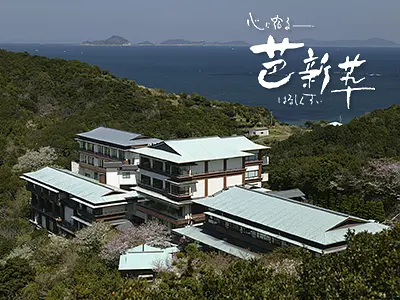江戸時代も今も"粋"な「松阪木綿」について、三重県出身の写真家・浅田政志さんと、松阪市ブランド大使の中川静香さんが学ぶ
掲載日:2021.12.15
松阪木綿は、天然藍の先染め糸で織る縞模様が特徴の綿織物。松阪商人が江戸で販売したところ「粋」だと大ヒット。今回は、松阪木綿について三重県出身の写真家・浅田政志さんと松阪市ブランド大使の中川静香さんが、松阪屈指の豪商・長谷川治郎兵衛家の旧宅にて、NPO法人松阪歴史文化舎さんから学びます。
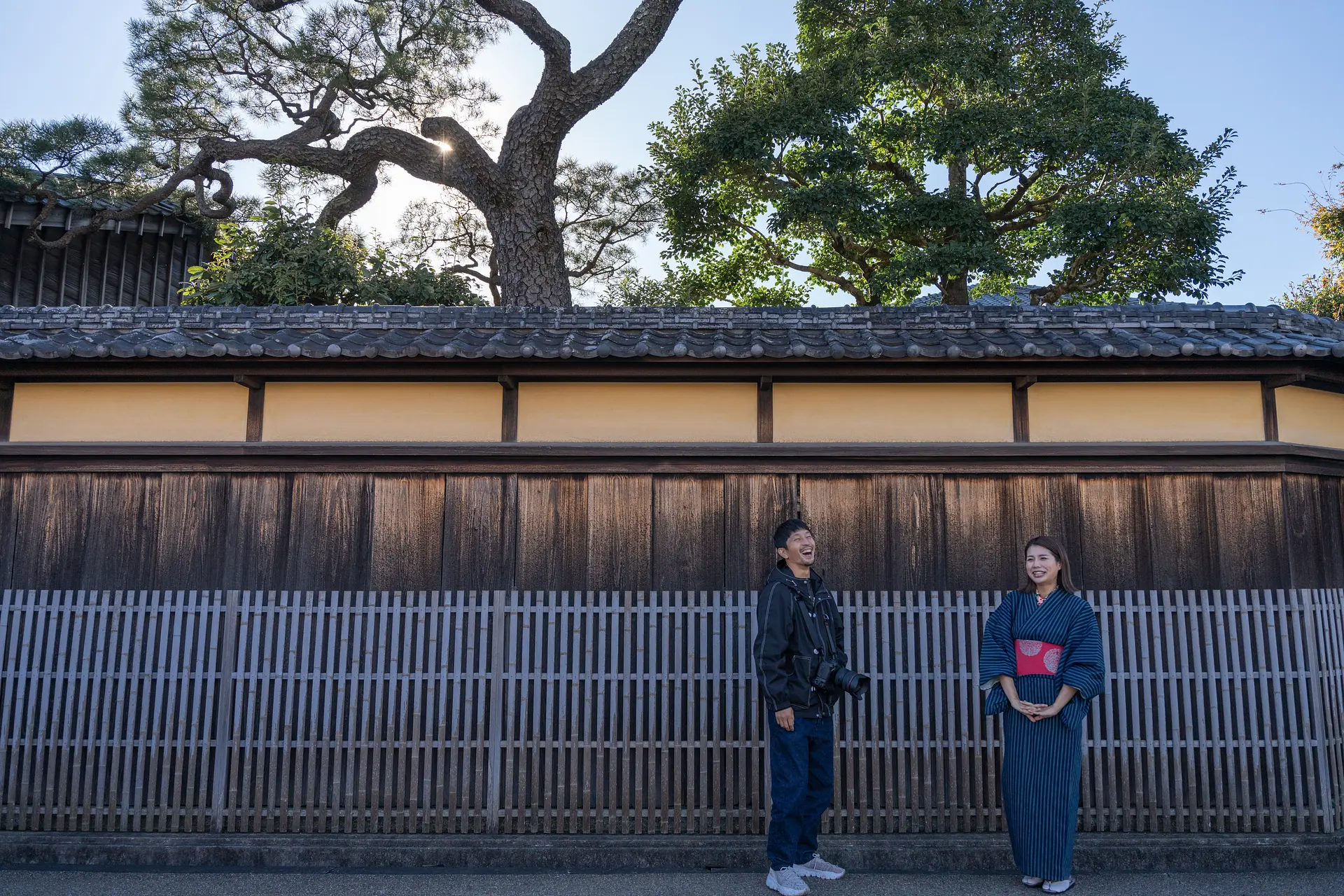
松阪木綿問屋であり、日本一の大商人として名を馳せた三井グループの祖・三井高利をはじめ、小津、長谷川など多くの豪商を輩出した松阪。「豪商のまち松阪」の礎ともなった松阪木綿という”粋”の文化について、三重県出身の写真家・浅田政志さんと、松阪市ブランド大使の中川静香さんが学んでいきます!
記事内には、浅田政志さんが撮影した写真もあります。要CHECK!
映画「浅田家!」の原案者でもある浅田政志さんのプロフィールはこちらから
■目次
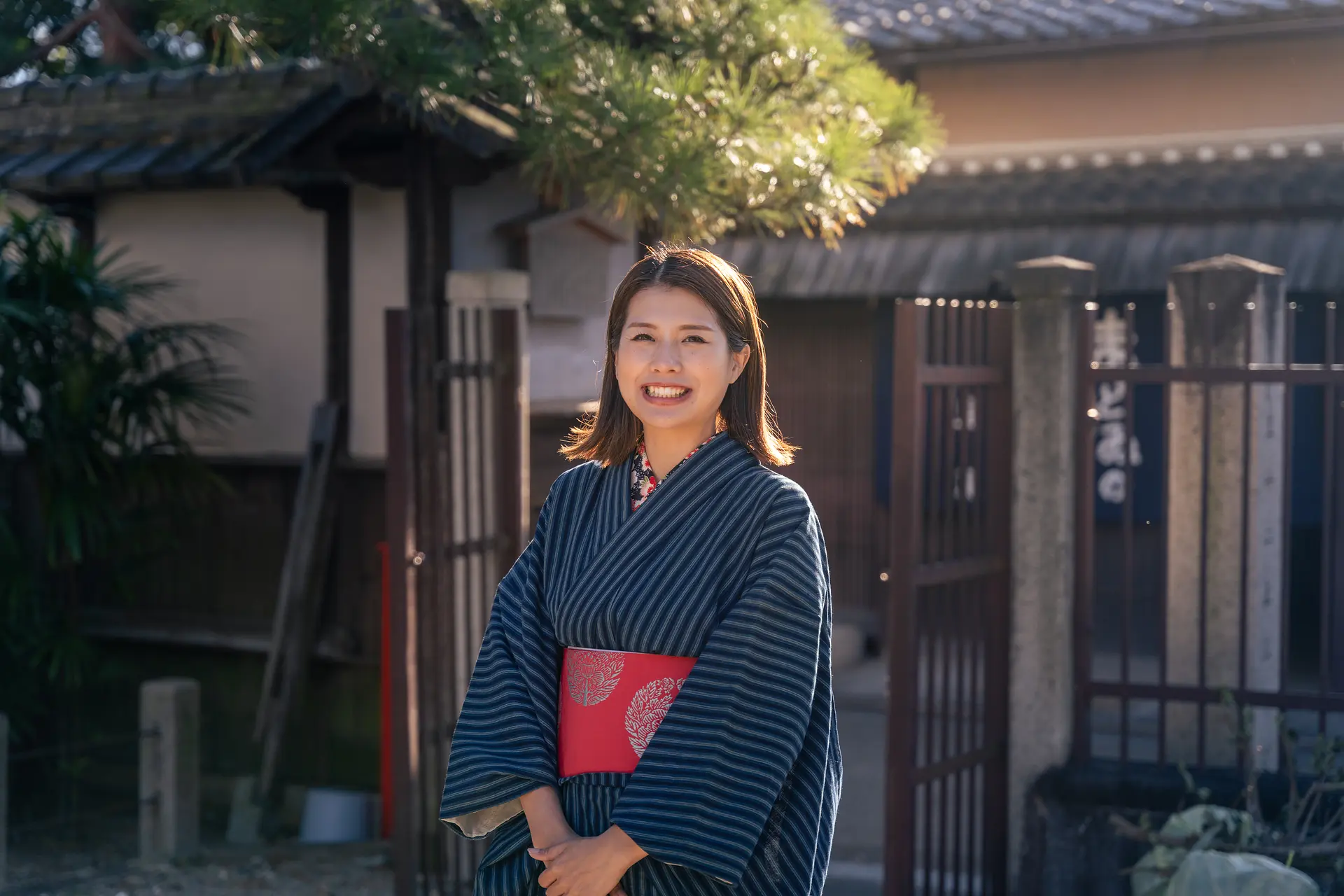
中川静香さんプロフィール
三重県鳥羽市出身。2012年9月に「ミス伊勢志摩」に推薦され、グランプリを受賞。「三世代海女」として、祖母、母とともに「鳥羽市観光キャンペーンガール」に任命される。結婚を機に松阪に移住。その後、松阪市ブランド大使に就任した。
今回中川静香さんが身に着けているのは、松阪木綿の簡単着物。こちら「最短3分で着れる」着物なんです。気軽に松阪木綿の着物を楽しむことができて、そのまま町歩きもOK!
▼松阪木綿でまち歩き体験は以下から
松阪もめんきもの観光レンタルセンター(着楽屋)
https://www.kankomie.or.jp/spot/23304.html
うつくしや東村呉服店
https://www.kankomie.or.jp/spot/23748.html
中川静香さん 名刺入れや小物入れは持っているのですが、松阪木綿の着物を着たのは初めてなんです。素材が木綿でハリがあるからか、気持ちも「ピシッ」となりますね。
「海の中のことは、人一倍詳しいのですが、松阪の文化については、まだ勉強中。」という中川静香さん。ここからはNPO法人松阪歴史文化舎さんに、松阪木綿や旧長谷川治郎兵衛家について詳しくお聞きしました!
1.松阪木綿について学ぶ
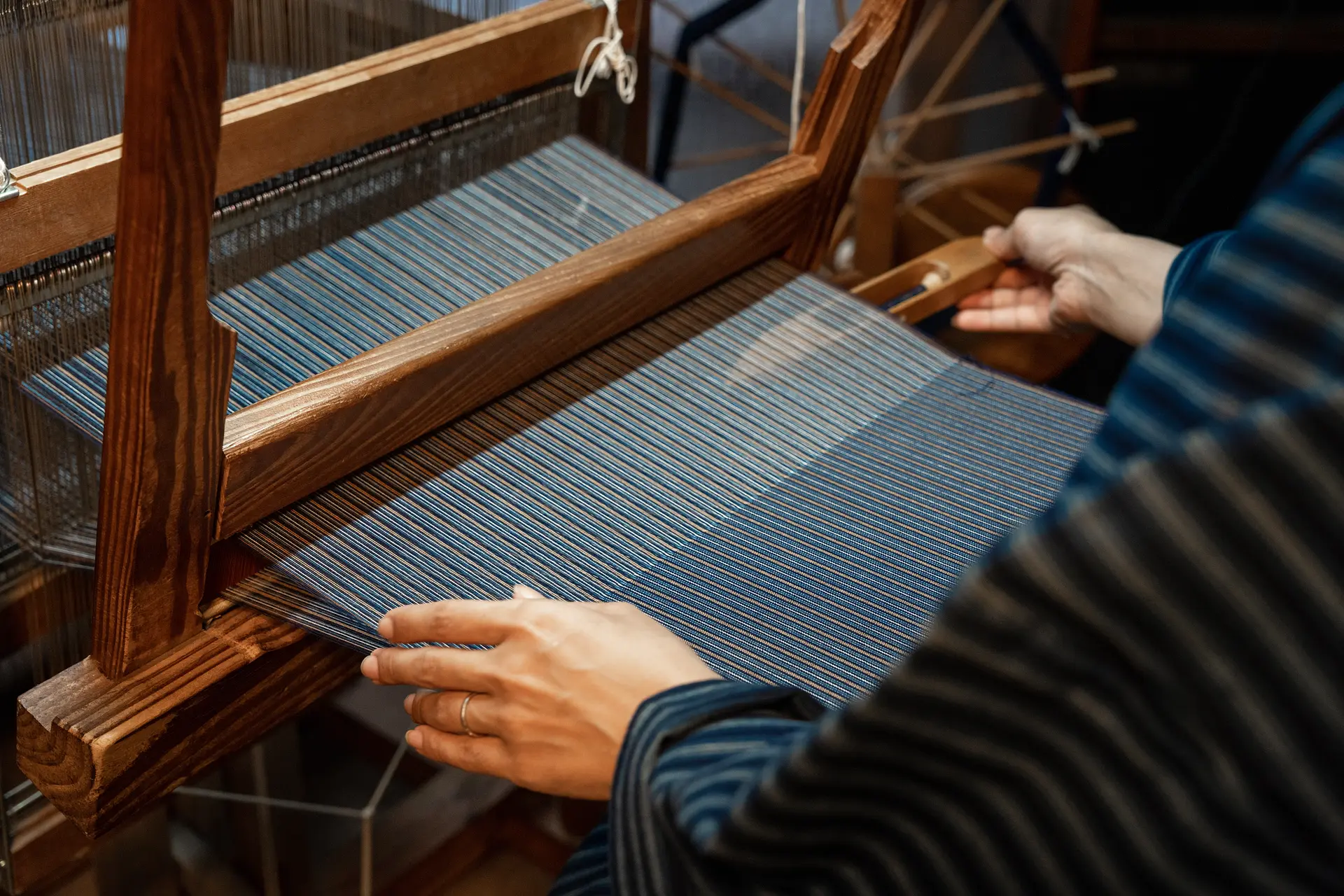
松阪歴史文化舎さん 江戸時代に松阪木綿が大流行するもっと前から、松阪には紡織の歴史があったんですよ。5世紀中頃、大陸から機(はた)織りの技術をもった集団「漢機(あやはとり)」「呉織(くれはとり)」が渡来して、のちに松阪市東部地域などに住んだといわれています。
中川静香さん 松阪木綿が作られるよりももっと前から、松阪に機織りの歴史があったんですね。
松阪歴史文化舎さん はい。15世紀ごろになり、南蛮貿易を通じて綿が日本に伝わったことで、伊勢湾岸と大阪湾岸で綿の栽培が盛んになりました。さらに、「柳条布(りゅうじょうふ)」という、柳の葉の葉脈のように細い縞柄の綿布が伝来しました。
浅田政志さん 紡織の技術と、素材の綿、縞の模様が揃いましたね。
松阪歴史文化舎さん さらに江戸時代、松阪には40軒余りの紺屋(藍染屋)集団があったそうです。こうして、「松坂嶋」と呼ばれる、松阪木綿特有の柄が生まれました。ところで…現在はストライプ柄のことを「縞」と書きますが、当時は「嶋」とも書いていたそうです。「しま」というのは、貿易で「島」から伝わってきたからとも解釈できます。ほかにも貿易で伝わってきたものを「しまもの」と呼んでいたそうですよ。
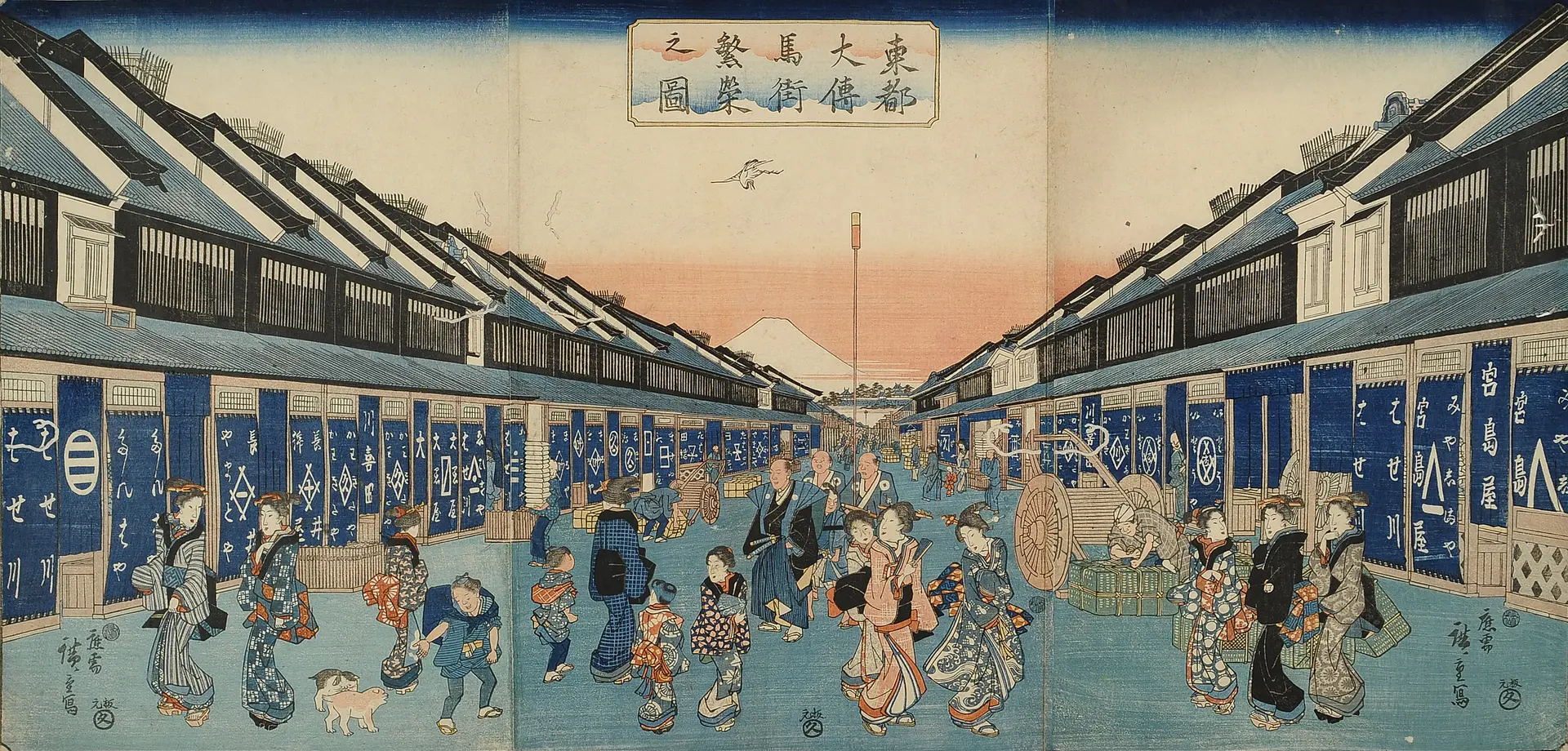
こちらは歌川広重作、東都大伝馬街繁栄之図です。日本橋大伝馬町一丁目の風景で、松阪出身の商人、長谷川(本店・向店・戒屋・亀屋と複数店舗ありました)、長井(大和屋)、小津(伊勢屋)の店が軒を連ねています。
松阪歴史文化舎さん 松阪を含む伊勢商人の手によって、一番多い時で年間に50~60万反(反=1着)の布が、江戸で売られていたそうです。
中川静香さん すごい!
松阪歴史文化舎さん 江戸では、倹約令(浪費や贅沢を禁止する制度)によって、華美な着物を着ることができない状況になってしまいました。松阪木綿は、遠目から見ると無地のように見えますが、近づいてみると縞柄模様が見え、柄もバリエーション豊富。それが「粋」だとして、江戸での大流行につながったそうです。
ちなみに、小津家は現在も大伝馬町(東京・日本橋)に「小津和紙」(小津商店(株))として店を構えられています。松阪と東京は、現在も繋がりがあります。
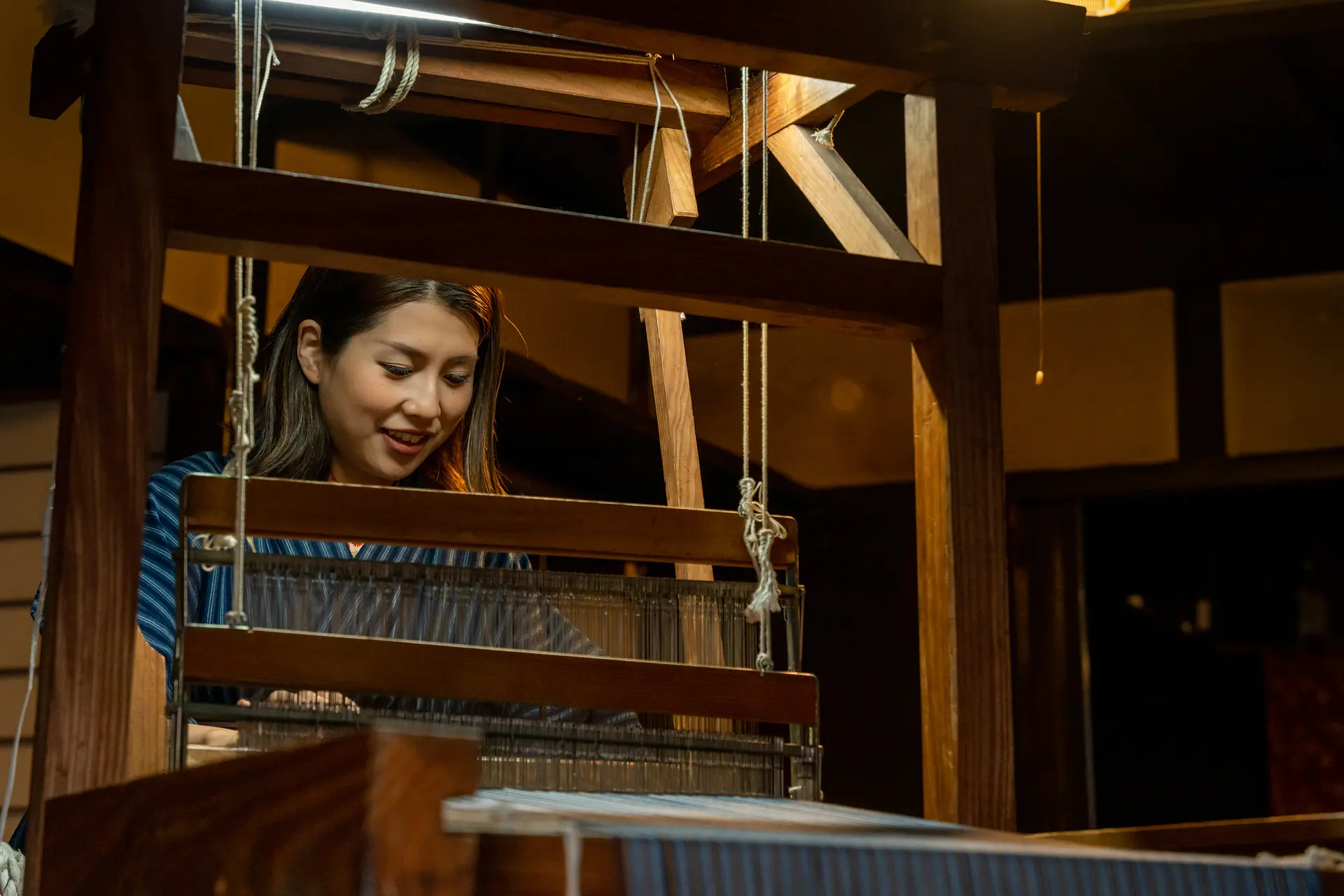
旧長谷川治郎兵衛家には、松阪木綿の機織り機が展示されています。金・土・日に「ゆうづる会」の方々の機織り実演や、機織り体験ができるようになっています。(松阪もめん手織りセンターでも有料で体験可能です※火曜定休)
糸を通して、手でバーをもって「トントン」と糸をそろえ、ペダルを踏みかえ、もう一回「トントン」、また糸を通す…集中していないと手順を間違えてしまいそうですが、中川静香さん、めちゃくちゃスムーズにできています。松阪歴史文化舎さんに「スカウトしたい!」と言わしめるほどの腕前を披露してくださいました。
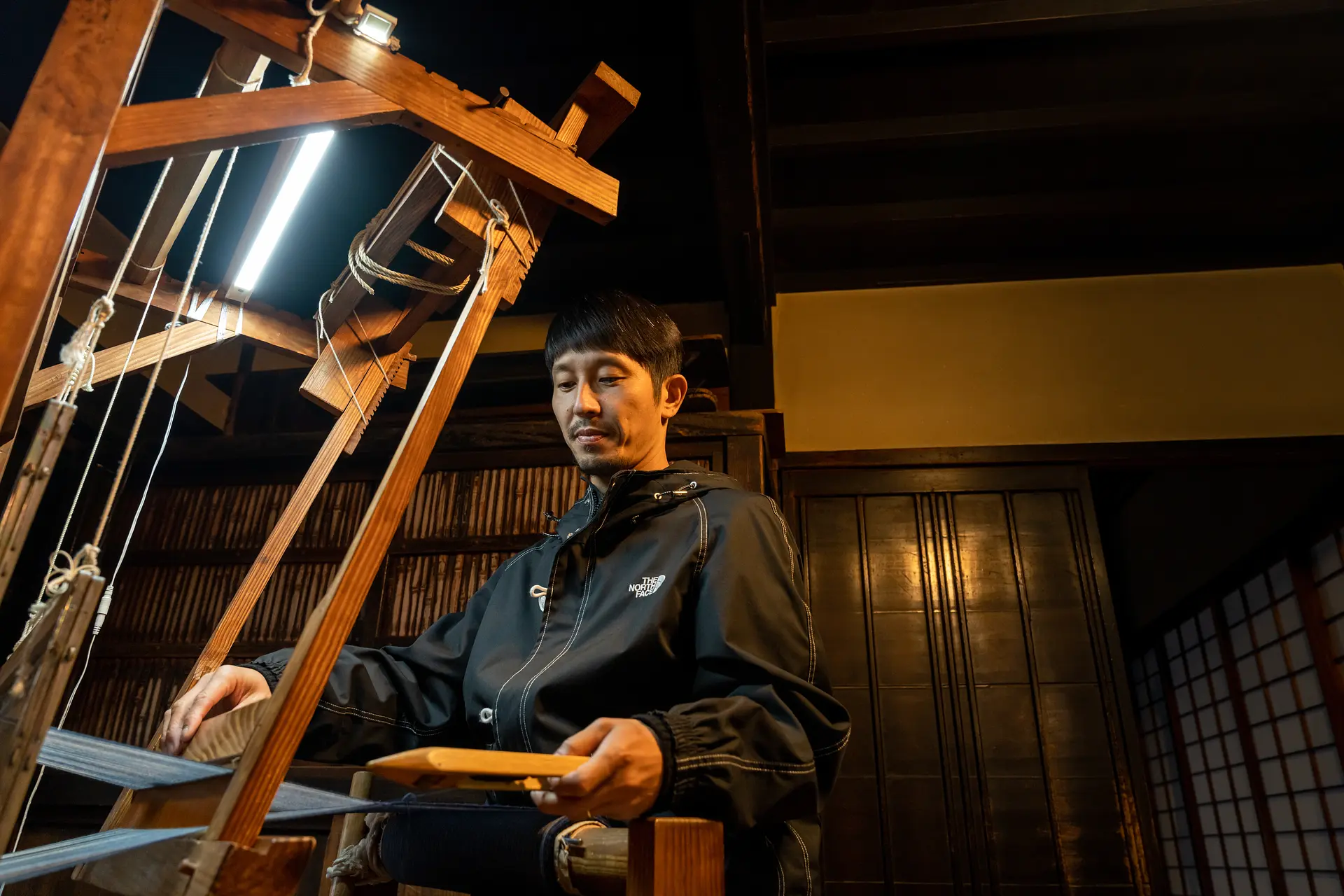
続いて浅田政志さんもチャレンジ。こちらもそつなくこなされていました。2人ともすごい。
松阪歴史文化舎さん 京都の西陣織のような難しい織物は職人さんたちが何十年も研鑽して織りますが、松阪木綿は比較的簡単な(といっても、細かく模様を作り上げるためには技術が必要ですが)模様です。そのため、農家の副業として織られていたそうです。
2.松阪の豪商・長谷川治郎兵衛の旧宅
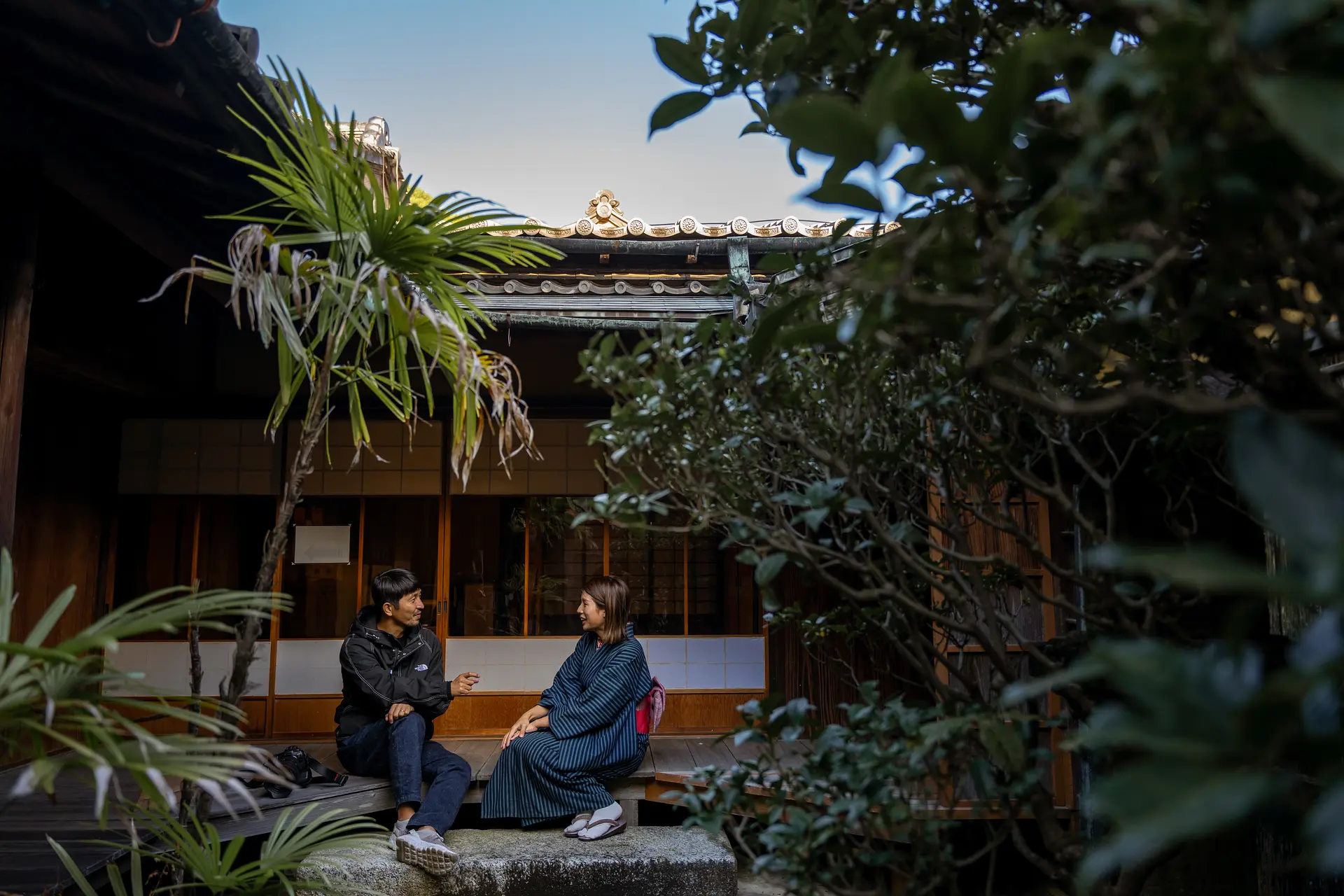
魚町通りに位置する、松阪屈指の豪商・長谷川治郎兵衛の旧宅は、増築・新築を繰り返しながら30以上の部屋がある主屋と5棟の蔵をもつ大きな屋敷となったそう。2016年には国の重要文化財に指定され、「豪商のまち松阪」を象徴する貴重な歴史的建造物として、さらに広く認知されました。
松阪歴史文化舎さん 旧長谷川治郎兵衛家の中では、お庭を眺めながらお抹茶(500円)を楽しんでいただけます。「歴史と風情のある場所でお抹茶がいただける」と好評で、年間パスポートを購入される地元の方も多いです。四季折々でお庭の景色が変わるため、年に何回来ていただいても楽しめます。
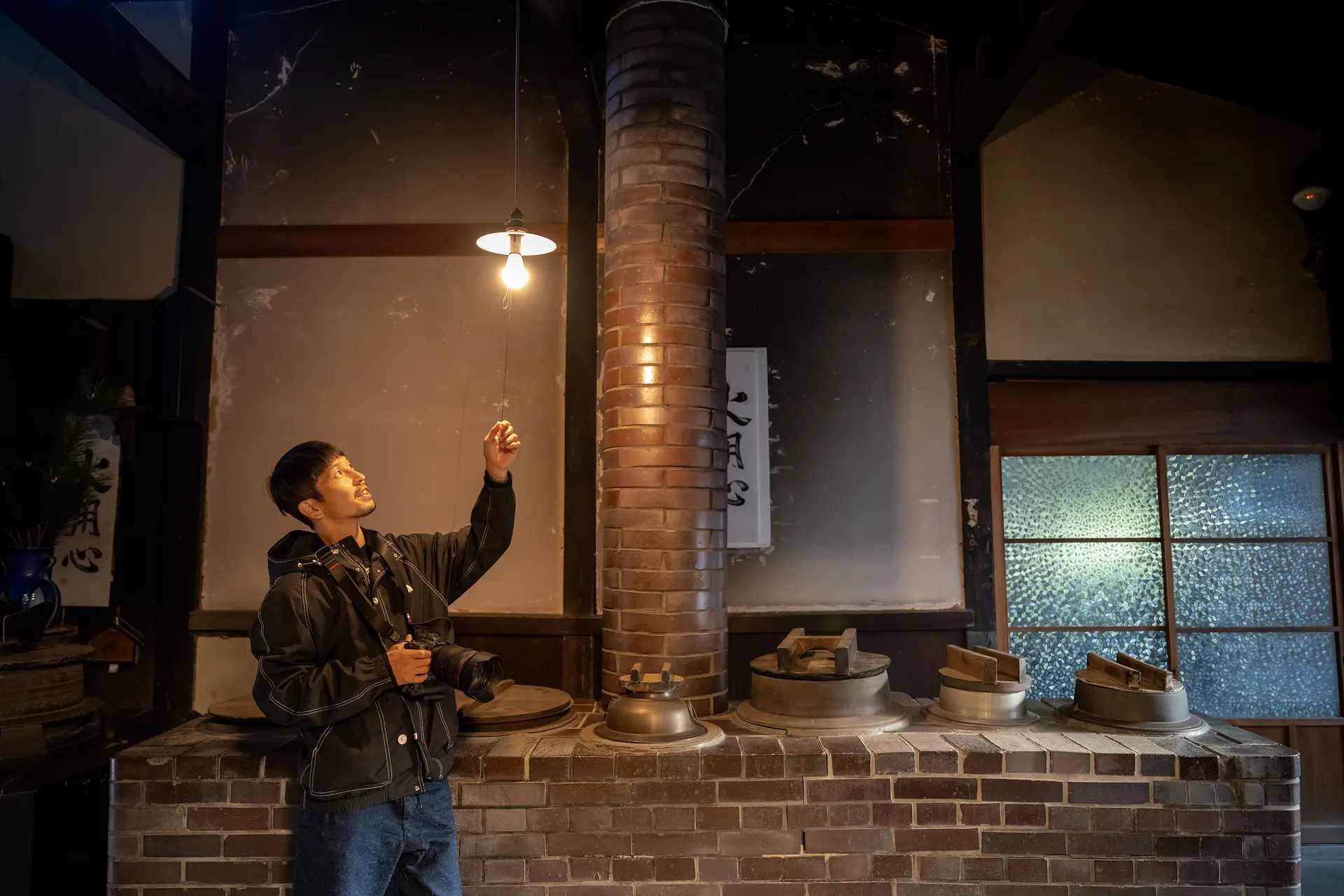
お庭も趣があり素晴らしいですが、台所の竈(かまど)など、生活の名残を感じる場所も素敵ですね。
3.松阪市ブランド大使・中川静香さんから見た松阪
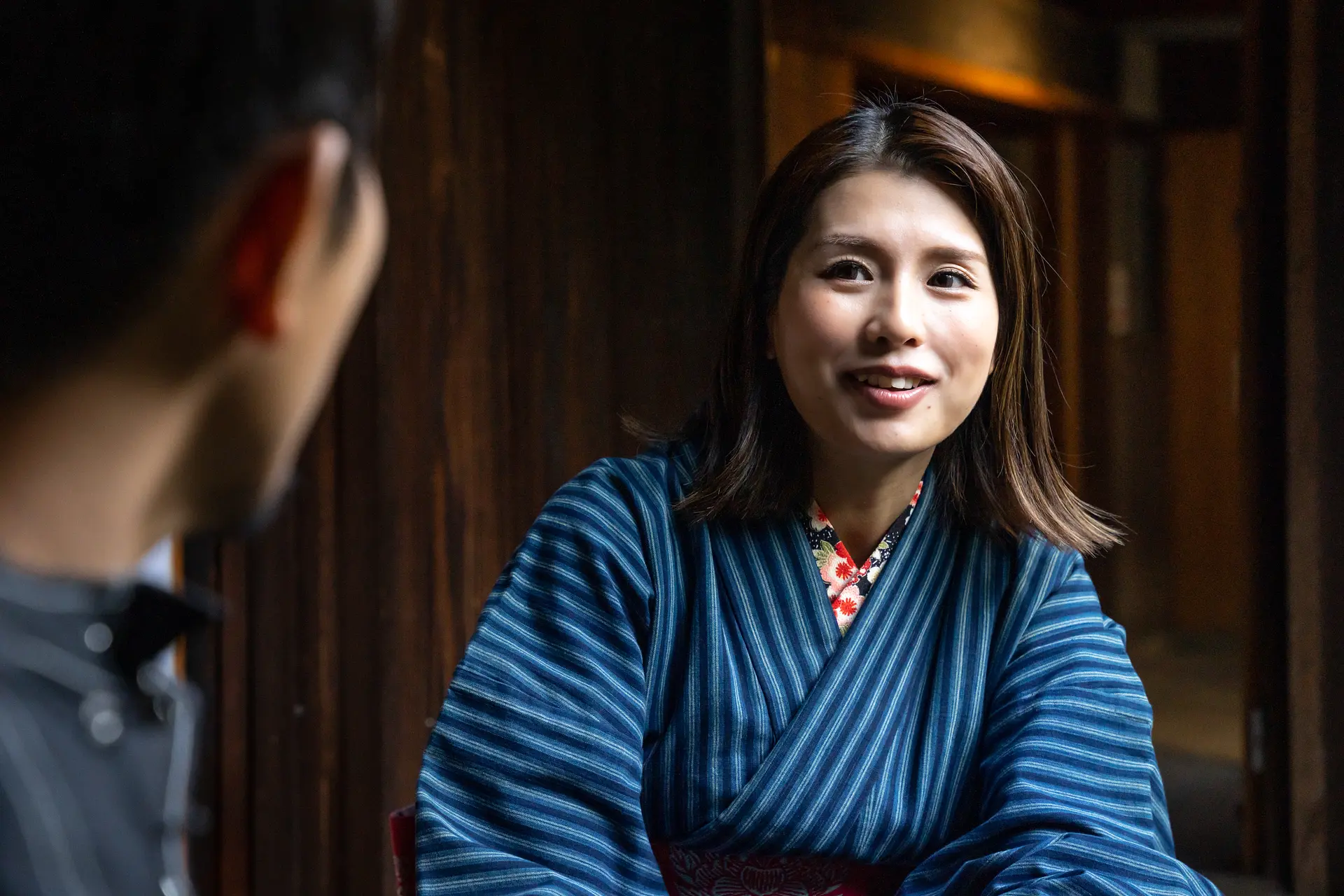
中川静香さん 親子3世代で海女をしていて、20歳のころに鳥羽市の観光キャンペーンガールに就任、25歳で結婚を機に松阪市民になりました。鳥羽市長と松阪市長が交流があり、松阪市長に、松阪でもぜひブランド大使になってほしいと声をかけていただいて、就任しました。実は現在も、松阪市から鳥羽市に通う形で、海女を続けています。海女漁を行うための漁業権は実家が所有しているので、私は嫁いだ際に消滅してしまう予定でしたが、海女の高齢化や人口減少を少しでも食い止めるために新しいルールを作ってもらった形です。松阪市のPRに取り組ませていただきつつ、鳥羽市での海女業も続けられて本当にありがたいです。
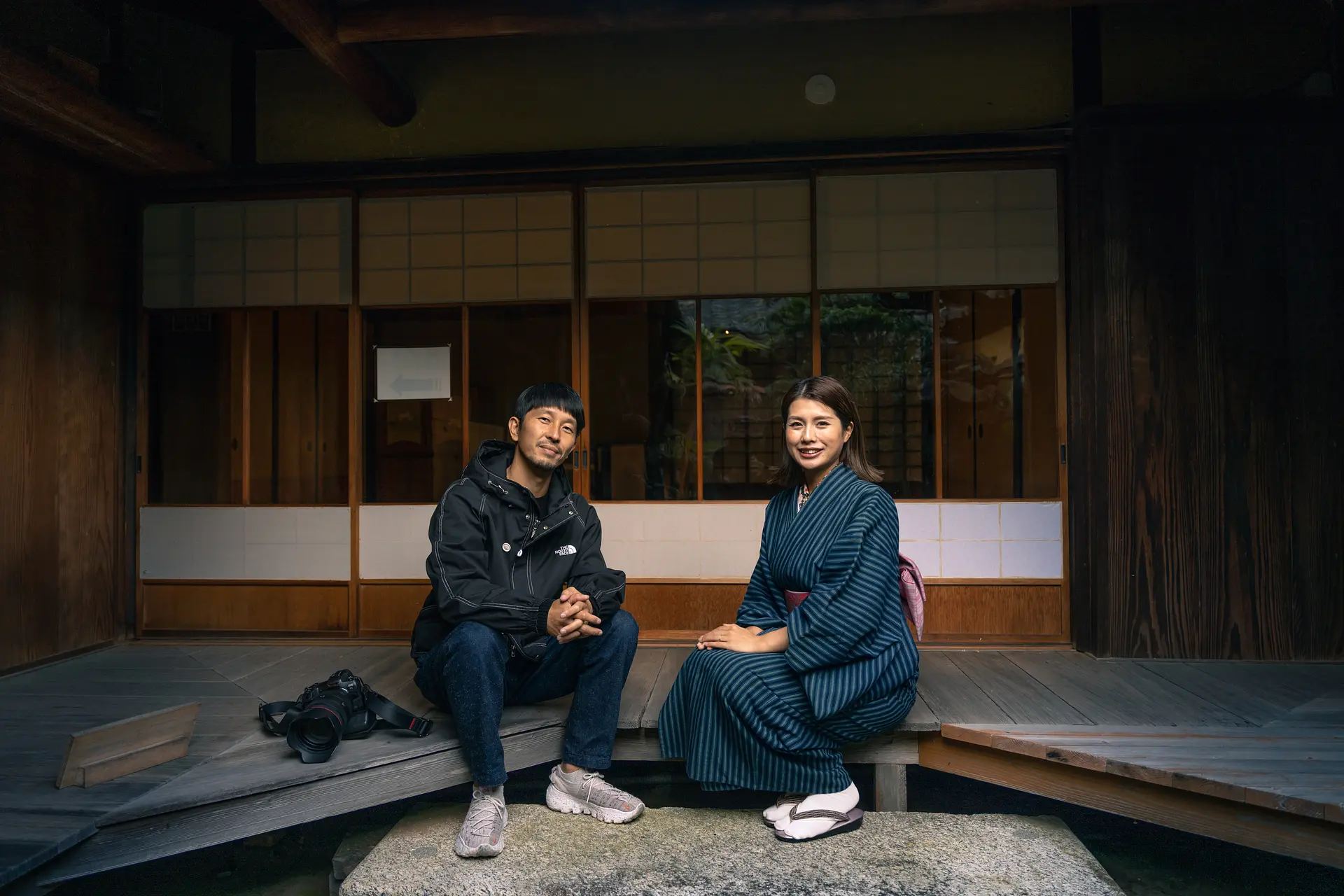
浅田政志さん 2018年に「松阪かるた」(松阪市の取り組み。松阪ゆかりの方をモデルにした、かるた風の写真)の撮影があったのですが、そのときに、松阪の風景や文化、食べ物など色々と知りました。松阪って、知れば知るほど奥が深いですよね。
中川静香さん 奥が深いし、幅が広いですよね。全国的に有名なグルメもありますが、地域で愛されているソウルフードも魅力的です。私、松阪のグルメでは「松阪鶏焼き肉」(いわゆる、かしわの焼肉)が好きなんです。味噌ダレでニンニクが効いていて、絶品で!松阪市は、出身地の鳥羽市から距離的には近いですが、食文化ひとつとっても鳥羽市とは違いがあって面白いです。
4.浅田政志さん撮影写真
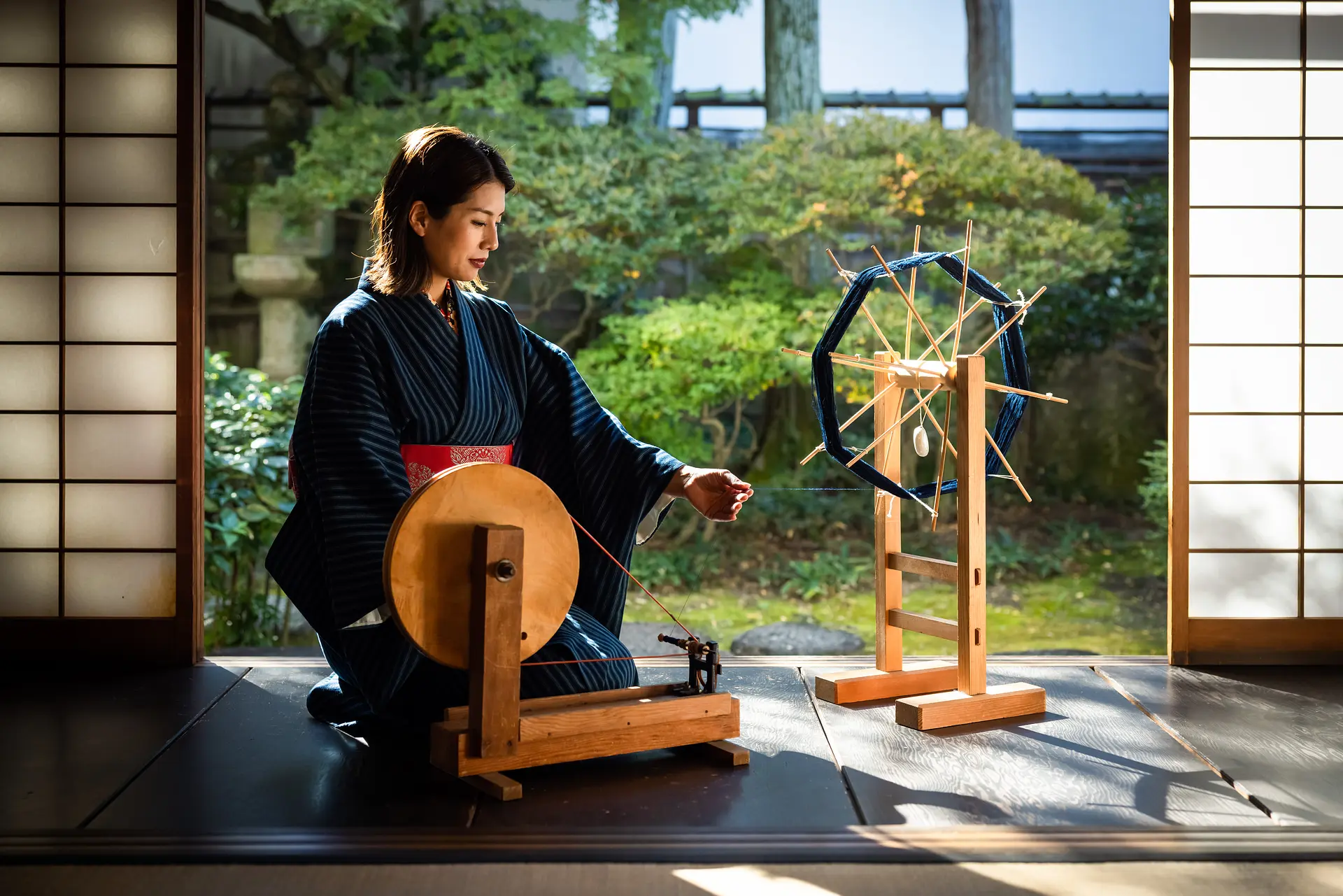
旧長谷川治郎兵衛家で中川静香さんを撮影。松阪木綿の着物に身を包み、木綿の糸をつむぐ姿が、まるで昔にタイムスリップしたようで素敵です。
旧長谷川治郎兵衛家
一般:個人400円 団体330円
6歳~18歳:個人200円 団体160円
9:00~17:00(入館は16:30まで)
水曜日(祝日の場合は翌日)、年末年始
●JR・近鉄松阪駅から徒歩10分
●松阪駅より三重交通バス松阪中央病院行きで、「市役所前」下車徒歩約3分
●伊勢自動車道「松阪IC」から約10分(松阪市駐車場へ)
記事制作:MSLP

.png)
